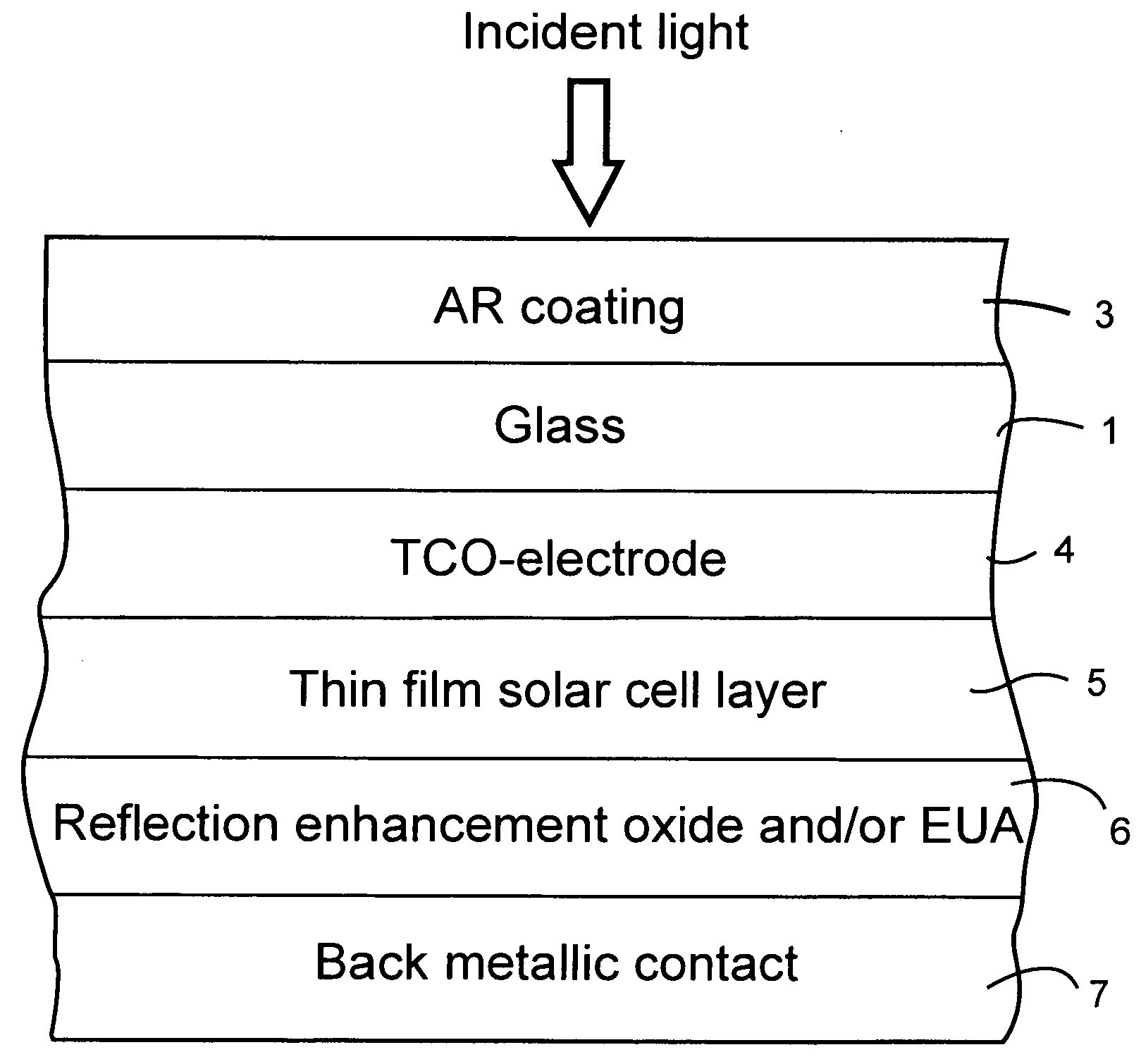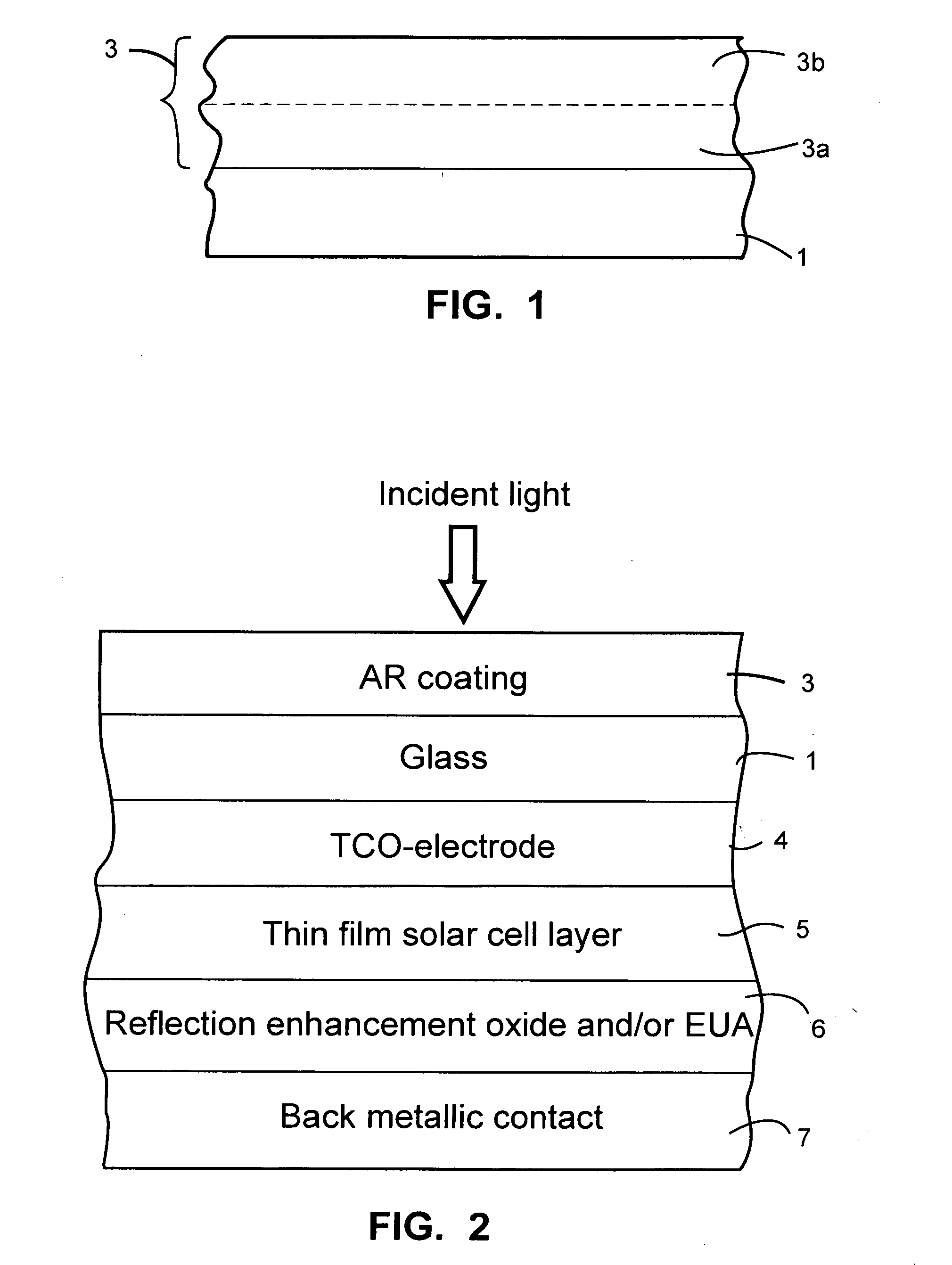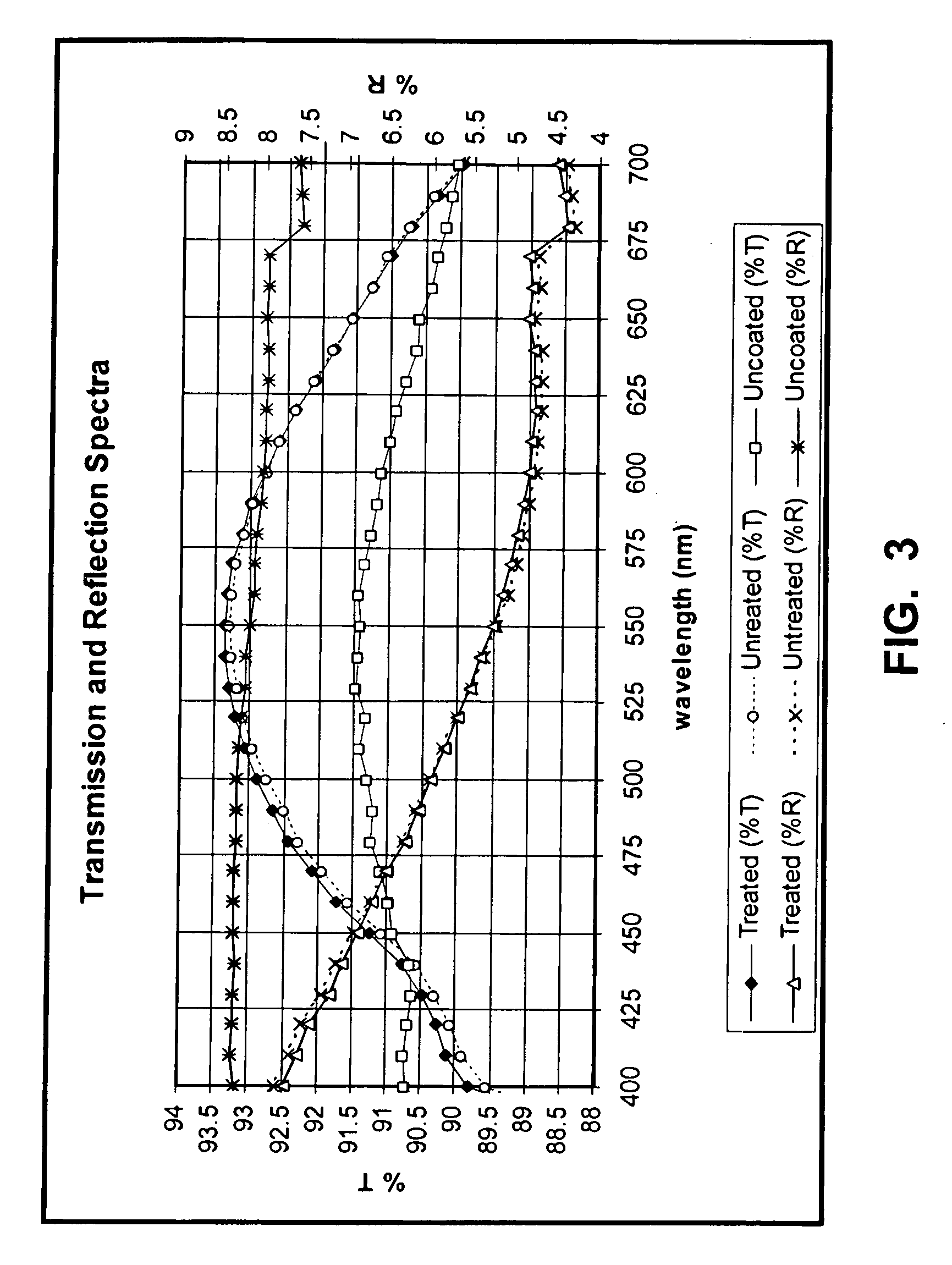Method of making an antireflective silica coating, resulting product, and photovoltaic device comprising same
- Summary
- Abstract
- Description
- Claims
- Application Information
AI Technical Summary
Benefits of technology
Problems solved by technology
Method used
Image
Examples
example # 1
EXAMPLE #1
[0050]Preparation of porous silica coating: A monolayer AR coating was deposited on sodalime glass by the method described in U.S. patent application Ser. No. 11 / 878,790. A liquid coating composition was prepared by mixing 0.6 gm 30 wt % dispersion of colloidal silica MEK-ST obtained from Nissan Chemical, 0.5 gm methacryloylpropoxy trimethoxy silane, and 18.9 gm of a commercial UV cure acrylic resin UVB370 obtained from Red Spot. The resulting coating composition contained 1.5% of total silica by weight of which about 60% by weight was colloidal silica and the rest in the form of silane. Liquid coating was deposited on a sodalime glass substrate by spin coating technique at 3000 rpm for 30 seconds and exposed to UV radiation for about 45 seconds to cure the film. The coated glass substrate was then fired at about 625° C. for about 5 minutes to obtain a porous silica coating. The coating thickness was measured to be 7.05 microns after UV curing and after firing the thicknes...
PUM
| Property | Measurement | Unit |
|---|---|---|
| Temperature | aaaaa | aaaaa |
| Molar density | aaaaa | aaaaa |
| Molar density | aaaaa | aaaaa |
Abstract
Description
Claims
Application Information
 Login to View More
Login to View More - R&D
- Intellectual Property
- Life Sciences
- Materials
- Tech Scout
- Unparalleled Data Quality
- Higher Quality Content
- 60% Fewer Hallucinations
Browse by: Latest US Patents, China's latest patents, Technical Efficacy Thesaurus, Application Domain, Technology Topic, Popular Technical Reports.
© 2025 PatSnap. All rights reserved.Legal|Privacy policy|Modern Slavery Act Transparency Statement|Sitemap|About US| Contact US: help@patsnap.com



